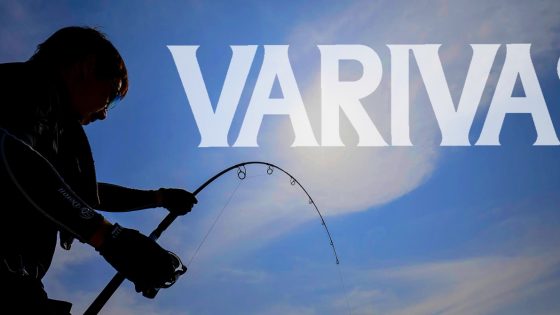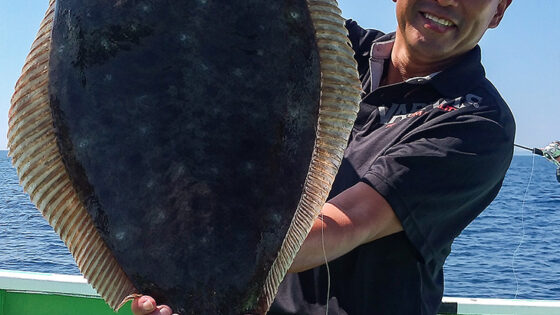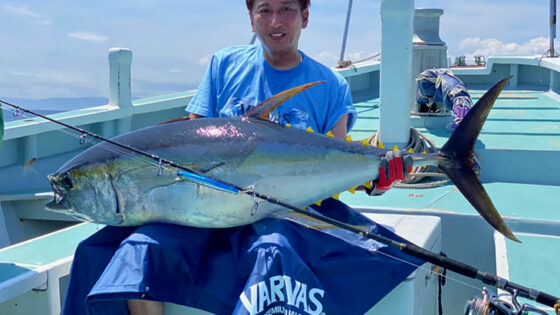 Catching prey with the most accurate casting than anyone …
Catching prey with the most accurate casting than anyone …
The Tsugaru Strait is located in the northernmost part of Honshu (Japan’s main island). From summer to winter giant Pacific bluefin tuna in the Tsugaru Strait are the ultimate target for saltwater anglers. The Tsugaru Strait is also the main battlefield for angler Ichiro Sato, who in September 2008 caught a 131.5 kg bluefin tuna, then in September 2009 exceeded his record with a 186 kg. Bluefin. Both were records for lure casting and standing fight with the rod held in hand.
Going to the sea more than 100 times a year, Sato enjoys challenging unexplored land and producing world records. When the ship leaves the port he begins to read the wind and tides carefully. “The wind and the tide flow are different each time. If the wind is strong, the boat may go in the direction opposite to the tide flow. How fast and in what direction do you go? I am always watching while I’m out at sea.”
Off the coast you’ll find ‘Nebula,’ Japanese fishing lingo for a swirling baitball of small fish being chased by larger fish near the surface of the sea. It’s like a ‘vending machine’ spewing out Bluefin Tuna in all directions among the swirl. The moment you encounter them the battle begins! Accurate casting in a Nebula is extremely difficult. “The maximum size of the swirl is 100m in diameter. Bluefin tuna, with a high hit rate, circle within a few meters. That is what we aim for, like an accurate iron shot from a golf club. Strong wind and tidal current move your foot holding, and the Nebula is moving. It’s challenging to calculate and throw a lure with the wind, tide, and swirl each moving differently. Sometimes I throw it at a different angle at 45 degrees. “Sato’s cast is more accurate than anyone else, even in such a challenging environment. Several times a year he goes out to the same sea and throws countless times. That’s why he can shoot like a top professional golfer.
 ‘Fear’ is when a lightweight fighter challenges a heavyweight
‘Fear’ is when a lightweight fighter challenges a heavyweight
But you cannot help yourself…
Sato surprisingly said that he is ‘scared’ every time he challenges himself at Nebula fishing. When it comes to casting, he admits that his knees reflexively quiver. “You can actually see a giant of more than 100 kg flying on the ocean. It’s like a lightweight boxer challenging a super-heavyweight. The opponent is overwhelmingly strong. If you attempt it, you might seriously get hurt. I don’t know how long it will take to reel in. I may fight for more than 10 hours and the line may be cut. It is a fighting match for an unlimited time limit. But I still want to throw it. I have a strong desire to fight the game with bluefin tuna.”
When Sato caught a 186 kg Bluefin the death fight lasted seven hours. He became so dehydrated he had to be hooked up to an IV drip the next day. He also suffered significant injuries such as meniscus damage to the knee and cruciate ligament detachment. In other fights Sato had fatigue fractures in his ankles and his ligaments were cut three or four times. Still, Sato keeps chasing Nebula baitball swarms and bluefin tuna. It enchants him to pay the price.
 Prepare and manage your tackle 100%, but most importantly seek new challenges.
Prepare and manage your tackle 100%, but most importantly seek new challenges.
How can Ichiro Sato fish so much? Sato answers simply, “It’s because I keep trying without never giving up. It’s like going out into the sea a lot. Once you hook a fish, never trade off rods back and forth with other anglers. Fight the fight yourself until the end. If the fish is more than 50 kg, 8 out of 10 people will trade rods back and forth, taking turns. But not me. A big part of my mindset is not to give in to the opponent–in this case an overwhelmingly powerful bluefin tuna. In baseball it’s like playing against a terrific pitcher, and the result is almost a strikeout. But, if you face him 100 times , you may be able to connect with a ball once. If you face him 1000 times, you might be able to hit a run. For that reason you have to incrementally improve your rods, lines, reels, and physical strength. That’s what I do.”
“Furthermore, managing your tackle is important,” says Sato. “For example, fishing line. I have been using VARIVAS line for more than 10 years, but the PE line is fiberous. Each time when cast it rubs and becomes thinner. When I catch less than 50 kg several times, I change the line to a new one, coated with VARIVAS’s PE coating spray. I will spray it three times later and let it soak in. Also, I diligently spray it even while on board the boat. The reason I pay so much attention to the line is that I want to face each challenge with 100% readiness. If the line breaks due to my neglect, it’s disrespectable to bluefin tuna; the hook could get stuck in its mouth and hurt it needlessly.”
Giving up is not an option, when supported by friends and teamwork.
When single handedly taking on a fighting fish, what Sato emphasizes most is the support and cooperation of his colleagues.
The fight with the 186 kg bluefin extended into the night. Surrounded by jet-black darkness four or five boats rushed from the harbor and ran side by side to illuminate the line with lights. When a ship runs out of gas on the way a fellow boat returned to the port and replenished it. Everybody supported Sato until the end. At the moment of landing, 5 or 6 people boarded the ship, pulling up the super heavyweight prey together. “The people around me support me. They lend a hand, so there is no option to give it up.” It’s said that Bluefin tuna game fishing is enjoyable for beginners and intermediate anglers, as well. Of course, it may be impossible to catch a big fish, but there are many points in the country where light classes of 10 kg and 20 kg bluefin gather. Sato recommends starting from there and gradually moving up. “I urge everyone to see Nebula once. It’s so exciting. But often people are so excited that they can’t see the surroundings, so it’s easy to have accidents such as hooking a person or dropping a pole into a ocean. As long as you pay attention to safety I don’t think there is any other game fish that you can enjoy as much.”
As a pioneer of bluefin tuna game fishing, Sato continues to refine his skill, physical strength, and tackle while spreading the popularity of bluefin tuna fishing. In the Tsugaru Strait an unseen 200g or 300g bluefin is waiting for Sato’s challenge.
The original article was published in Japanese by Morris Company, Ltd., March 9, 2012. True Voice,
Vol 2

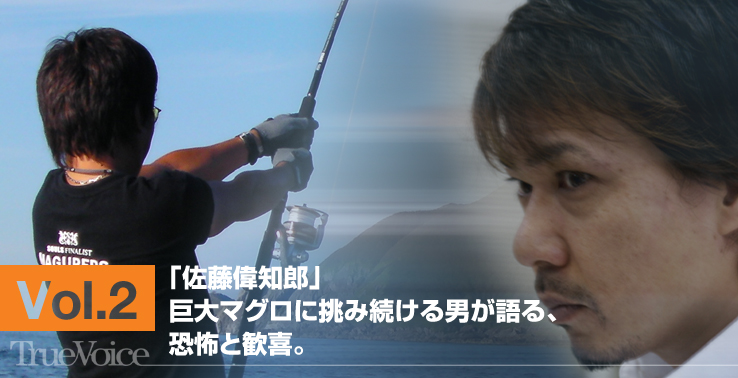
 Catching prey with the most accurate casting than anyone …
Catching prey with the most accurate casting than anyone …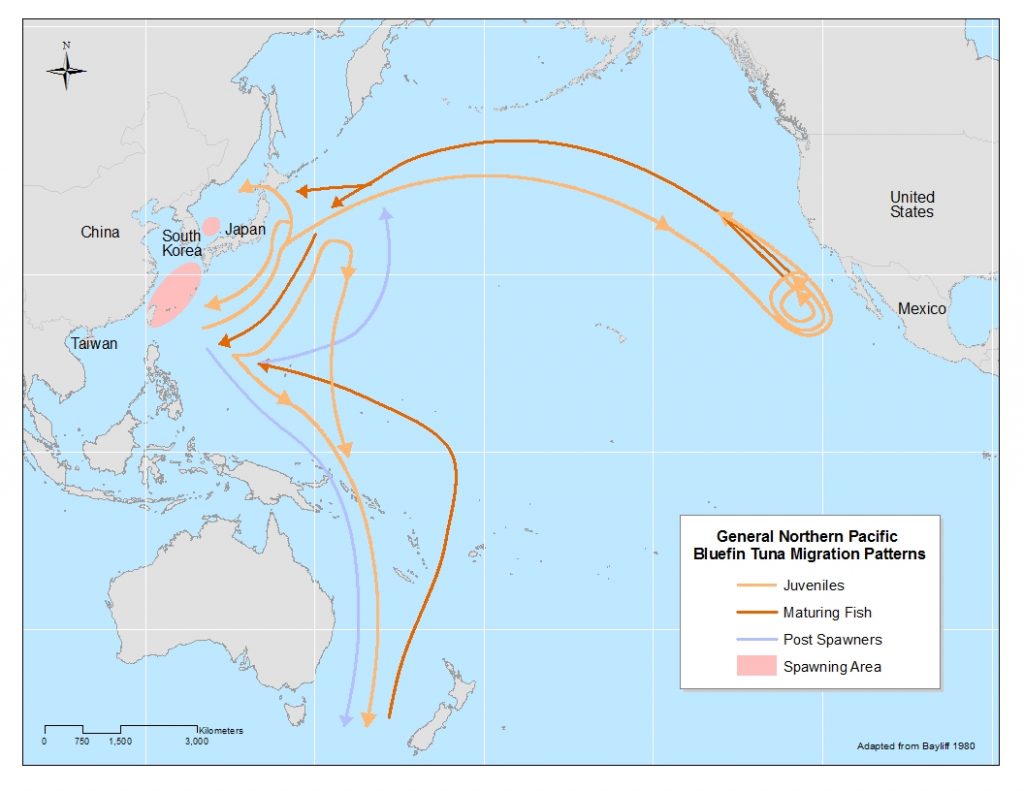
 ‘Fear’ is when a lightweight fighter challenges a heavyweight
‘Fear’ is when a lightweight fighter challenges a heavyweight Prepare and manage your tackle 100%, but most importantly seek new challenges.
Prepare and manage your tackle 100%, but most importantly seek new challenges.